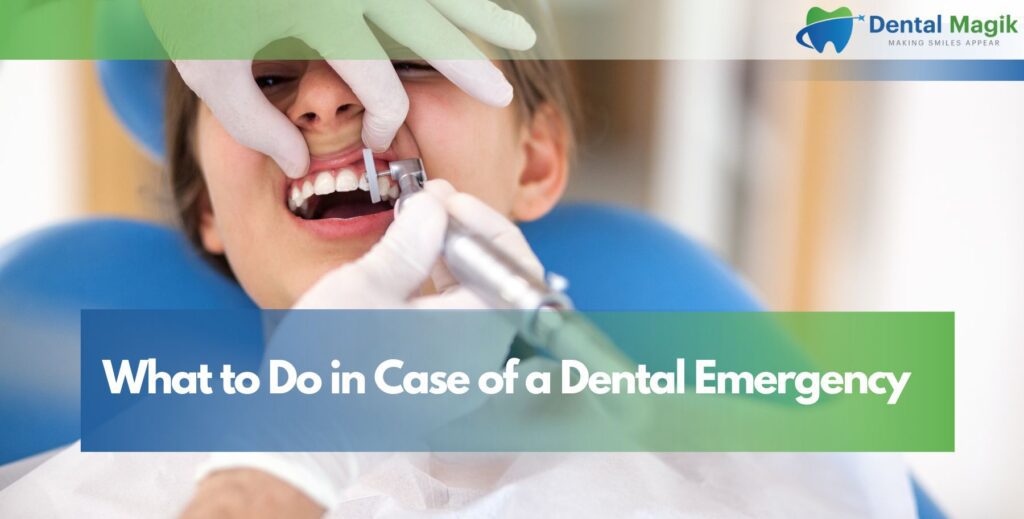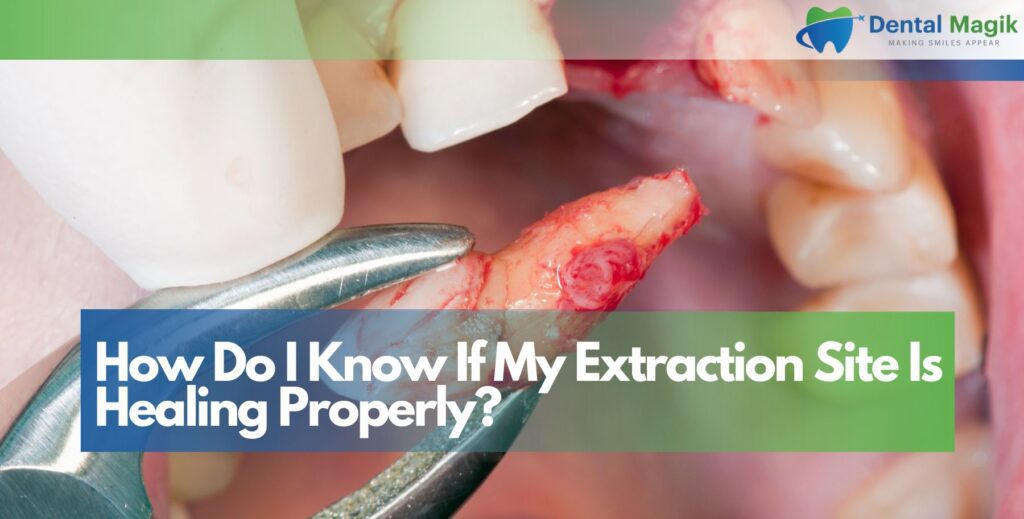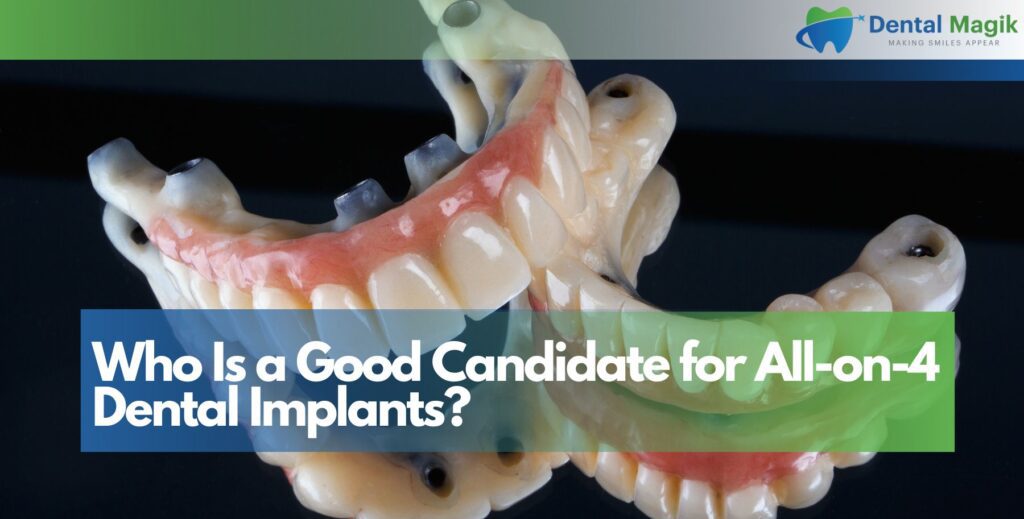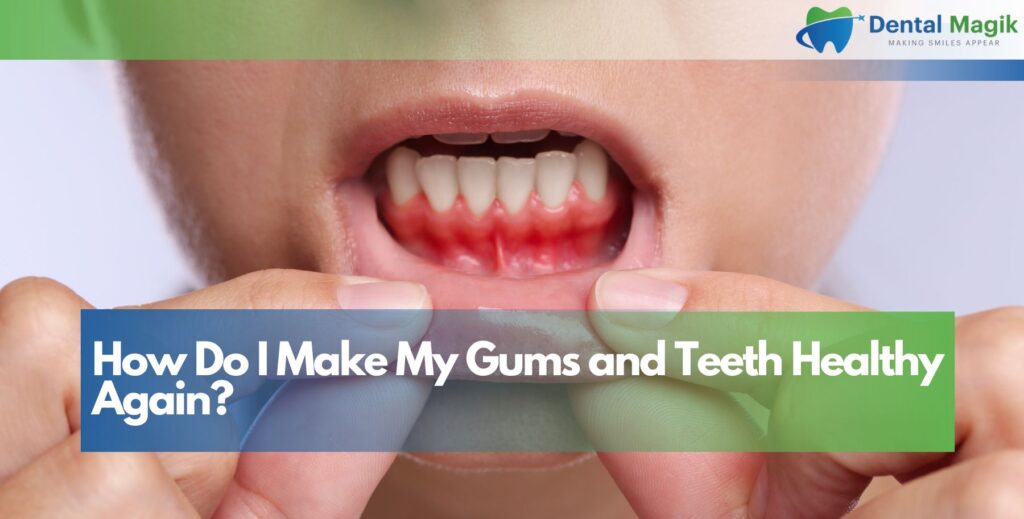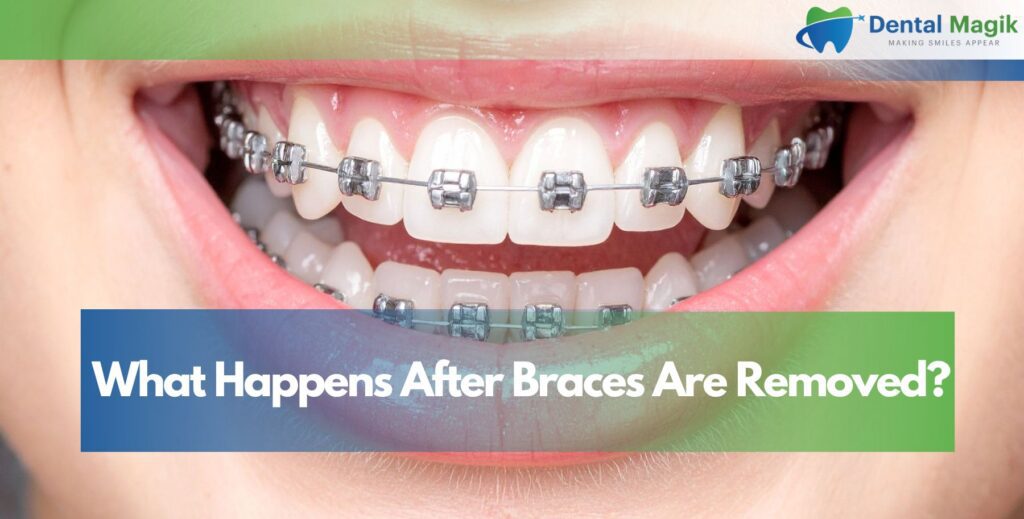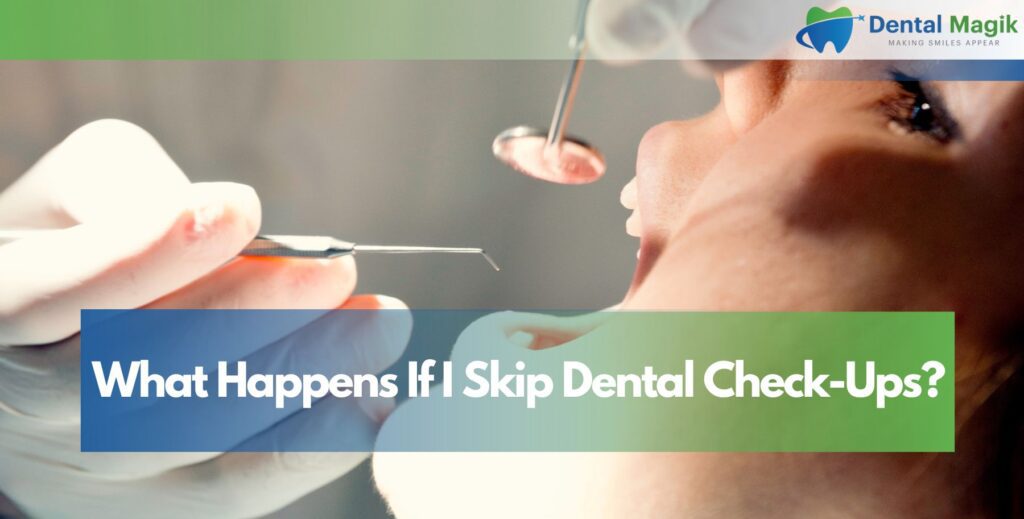A dental emergency can be painful and stressful. Knowing how to respond fast protects your tooth and reduces long-term damage. Whether it’s a knocked‑out tooth, severe pain, broken crown, or sudden swelling—you can take steps now to help ensure the best possible outcome.
Common Types of Dental Emergencies
Dental emergencies can happen anytime. Knocked-out teeth, cracked molars, lost fillings, and abscesses are the most common. Recognizing the urgency and knowing how to respond can prevent complications. Timely action protects your teeth, reduces pain, and saves you from more serious oral health issues.
Knocked‑Out Tooth (Avulsed Tooth)
If a permanent tooth gets knocked out, time is critical. Rinse the tooth gently—don’t scrub—and try to reinsert it into the socket if possible. Otherwise, store it in milk or saline and get to an emergency dentist within 30–60 minutes for the best chance of saving it.
Cracked or Broken Tooth
A cracked tooth can lead to pain, sensitivity, or infection. If you can, rinse your mouth with warm water, apply a cold pack outside your cheek, and take over-the-counter pain relief. Visit your dentist within 24 hours to assess whether bonding, a filling, or crown is needed.
Severe Toothache or Abscess
A sudden, sharp or throbbing toothache may indicate an abscess. Rinse with warm saltwater and use dental floss to remove debris. Don’t ignore fever or swelling—seek emergency dental care quickly to prevent infection from spreading.
Lost Filling or Crown
When a filling or crown falls out, gently clean the area and apply dental cement or sugar-free gum to cover the exposed tooth. Avoid chewing on that side, and schedule a dental visit immediately to protect the tooth from damage.
How to Handle a Tooth Knocked Out or Broken
If a tooth is knocked out or broken, act quickly. Reinsert it if possible, or store it in milk. For broken teeth, rinse gently and avoid chewing. Seeing your dentist within an hour improves the chance of saving the tooth and avoiding nerve damage or infection.
Steps for a Knocked‑Out Tooth
- Handle the tooth by the crown—never the root.
- Gently rinse with water or saline.
- Reinsert if possible, or store in milk or saline solution.
- Keep it moist and head to your dentist within one hour.
Care for a Broken or Fractured Tooth
- Rinse your mouth to find the missing piece.
- Apply a cold compress to reduce swelling.
- Take pain relievers if needed.
- Make an emergency dental appointment promptly.
Managing Dental Pain and Infections at Home
Managing tooth pain or infections at home includes rinsing with warm saltwater, applying cold compresses, and taking over-the-counter pain relief. Avoid sugary or acidic foods. While these remedies provide short-term relief, visiting a dentist promptly is critical to treat the root cause and avoid serious complications.
Pain Relief Tips
- Rinse with warm saltwater.
- Use ice packs to reduce swelling.
- Take NSAIDs like ibuprofen, as long as no allergies.
- Avoid heat or consuming very hot or cold drinks on sensitive teeth.
How to Spot Signs of Infection
Warning signs: swelling, fever, bad taste, or discharge. These may signal a serious infection requiring a root canal, abscess drainage, or antibiotics prescribed by your dentist.
Emergency Remedies While Waiting for Treatment
While waiting to see a dentist, use temporary dental cement, clove oil, or soft wax to cover exposed areas. Avoid chewing on the affected side and stick to soft foods. These remedies won’t fix the issue but can reduce discomfort and prevent worsening until professional help arrives.
When You Can’t Reach a Dentist Immediately
- Use temporary dental cement from pharmacies to cover exposed surfaces.
- Apply antiseptic oral gel over inflamed areas.
- Keep salt rinses gentle but frequent.
What Not to Do
- Don’t ignore serious symptoms.
- Avoid placing aspirin directly on gums—it causes burns.
- Never try home extractions or unsanitary dental procedures.
Preventing Dental Emergencies in the Future
Preventing dental emergencies begins with good oral hygiene, regular checkups, and avoiding bad habits like biting on ice or using teeth as tools. Wear a mouthguard during sports and fix dental problems early to avoid unexpected pain, infections, or costly treatments later on.
Good Oral Hygiene Habits
- Brush twice daily with fluoride toothpaste.
- Floss every day.
- Visit your dentist every six months for routine exams and cleanings.
Protective Measures for High Risk Activities
- Wear a sports mouthguard during contact sports or high-risk activities.
- Don’t use teeth as tools for cracking nuts or opening packages.
- Avoid chewing hard objects like ice or pens.
Planning Ahead: Emergency Dental Checklist
Create an emergency dental kit with gauze, saline solution, gloves, and your dentist’s contact info. Know the location of emergency dental clinics near you. Preparing ahead can save valuable time and reduce panic if an accident happens at home, work, or while traveling.
Essential Items to Keep On Hand
- Emergency dental kit (temporary cement, gauze, gloves)
- Digital photo of your smile (helpful for cosmetic guidance)
- A list of local emergency dentists and sweetener-free salt solution instructions
Knowing Your Options for Dental After‑Hours Care
Don’t wait until midnight with a severe pain. Many clinics offer after-hours emergency lines or 24-hour hotlines for patients in distress.
Why Acting Fast Matters
Delaying treatment in a dental emergency can result in infections, permanent damage, or tooth loss. Immediate care helps preserve your natural teeth and avoid complex procedures. When it comes to saving your smile, acting fast is not optional—it’s essential.
Saving Your Tooth
Prompt action—especially for knocked‑out teeth—increases the chance of saving the tooth. Timing can make the difference between life and loss for a natural tooth.
Reducing Complications
Timely treatment helps prevent infection, bone damage, or misalignment. A small problem, when ignored, can quickly become expensive or invasive.
Common Real-Life Dental Emergency Scenarios
From biting into hard candy to falling during a game, real-life dental emergencies happen fast. Broken crowns, lost fillings, or a child knocking out a tooth can all require urgent care. Knowing what to do in those moments can make a big difference in the outcome.
Case 1 – Broken Tooth from Biting Hard Food
After biting into a popcorn kernel, someone chips a molar. While the pain is minor, the exposed edge feels sharp. In this case, rinsing with warm saltwater, avoiding chewing on that side, and visiting an emergency dentist the same day is ideal.
Case 2 – Sudden Swelling After Ignored Toothache
A patient had mild toothache for a week, ignored it, and woke up with severe swelling and fever. This suggests a dental abscess. Immediate care and antibiotics were needed. The root canal and crown could have been avoided with faster action.
What to Do in Children’s Dental Emergencies
Kids often fall or injure their teeth during play. Understanding the right steps is key to protecting their smile and calming them down.
Baby Tooth Knocked Out
If a baby tooth is knocked out, do not try to reinsert it. Clean the mouth gently and apply cold compress. Visit the dentist to ensure the permanent tooth is unaffected.
Bleeding or Swollen Gums in Children
Sudden gum bleeding may be due to injury or infection. If bleeding lasts more than 10 minutes or if swelling worsens, call your pediatric dentist immediately. Keep the child calm and avoid giving hard foods.
Cost of Emergency Dental Care & Insurance Tips
Emergency dental care can be costly, but many insurance plans offer partial or full coverage. Check what’s included in your policy and ask your dentist about flexible payment options. Planning ahead helps you avoid financial stress during already painful and urgent situations.
What Emergency Visits May Cost
- Emergency dental consultation: $75–$150
- Tooth extraction: $150–$400
- Root canal therapy: $500–$1,000+
- Crown replacement: $800–$1,500
Using Insurance or Financing Options
Many dental emergencies are covered by insurance, especially if trauma is involved. Call your provider or dentist office ahead to confirm. Some clinics offer payment plans or third-party financing (CareCredit, Sunbit) to ease immediate financial pressure.
When to Visit the ER vs. the Dentist
Visit your dentist for most dental emergencies like cracked teeth or abscesses. Head to the ER if you have facial trauma, heavy bleeding, or signs of serious infection like swelling that affects breathing. Knowing the difference can save your life—and your smile.
Go to the Dentist If…
- You lost a tooth, filling, or crown
- You have a manageable toothache or chipped tooth
- Swelling is localized and not spreading rapidly
Go to the Emergency Room If…
- There is facial trauma with uncontrolled bleeding
- Swelling spreads to the eye or throat
- You’re struggling to breathe or swallow
- Fever exceeds 101°F with intense dental pain
Conclusion
Dental emergencies can happen at any time—at home, work, or even during a vacation. Acting fast, staying calm, and knowing what to do can protect your oral health and prevent costly complications. Whether it’s a knocked-out tooth, abscess, broken filling, or swelling, don’t wait—call your nearest provider for help.
If you’re in New Jersey and need expert care, contact a trusted Dentist in East Brunswick, NJ who provides same-day emergency services, experienced staff, and modern technology to restore your smile safely and quickly.
Frequently Asked Questions (FAQs)
What should I do if I knock out a permanent tooth?
Rinse it gently, try to place it back in the socket, or store it in milk/saline. See your emergency dentist within 30–60 minutes for the best chance to save it.
Can I go to the ER for a dental emergency?
Go to the emergency room only if there is serious trauma, bleeding you can’t control, or life-threatening infection. Most dental issues are best treated by a dentist.
How can I relieve a toothache at home?
Use saltwater rinses, cold compresses, and over-the-counter pain relievers. Avoid heat and sweet or hard foods. Schedule a dental visit as soon as possible.
Is a broken filling or crown an emergency?
Yes. While not always urgent, it should be treated quickly to prevent pain, infection, or further damage.
What if my child’s baby tooth falls out due to injury?
Don’t try to reinsert it. Gently clean the area and visit your pediatric dentist to ensure the adult teeth below are safe.
Can I use aspirin directly on my gums?
No. Never place aspirin directly on gum tissue—it can cause chemical burns. Always swallow medications as directed.
How can I prevent dental emergencies?
Wear a mouthguard, avoid chewing hard items, and maintain routine checkups. Good habits and quick action are the best defense.
Do dental emergencies cost more than regular visits?
Typically, yes. But many insurance plans cover emergency services. Ask your dentist about flexible payment options or in-house financing.
What should I keep in a dental emergency kit?
Include gauze, gloves, temporary filling material, a small container with a lid, saline solution, and your dentist’s emergency contact number.
How quickly should I get treatment for a dental abscess?
Immediately. An abscess can spread rapidly and lead to serious complications. Don’t wait—contact an emergency dentist right away.

